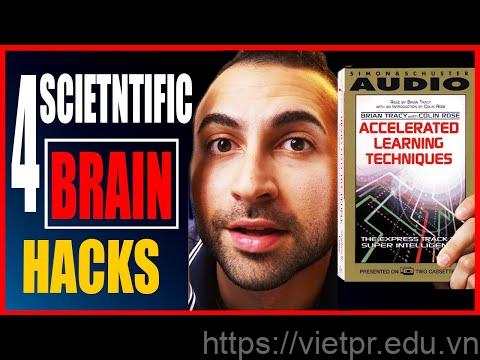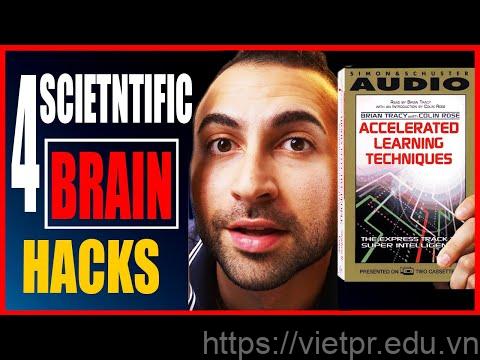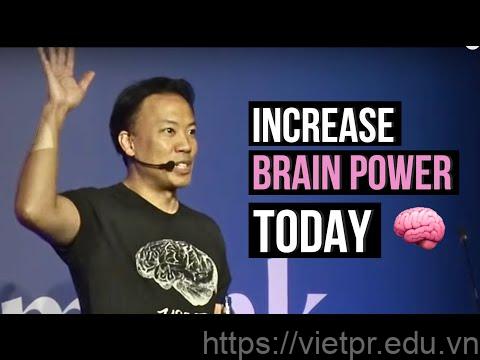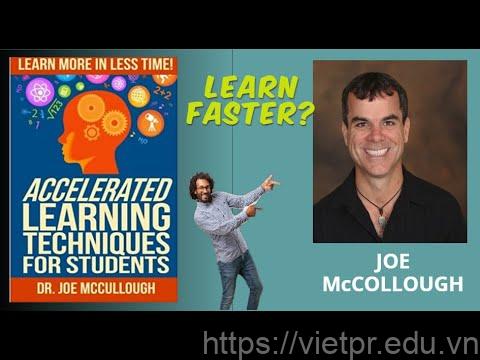Accelerated Learning Techniques for Students: Strategies to Boost Learning Efficiency

accelerated learning techniques for students are essential in today’s fast-paced educational landscape. At VietprEducation, we understand the importance of providing students with effective strategies to enhance their learning experience. In this article, we will explore various accelerated learning techniques that can help students maximize their learning potential. From understanding the key elements of accelerated learning to creating an engaging learning atmosphere, implementing these techniques in the classroom, and leveraging technology, we will provide valuable insights and practical tips. Additionally, we will discuss new values such as collaborative learning and the use of visual aids to further enhance the effectiveness of accelerated learning. Join us on this journey to discover powerful strategies for accelerated learning.

| Key Takeaways |
|---|
| Accelerated learning techniques help students maximize their learning potential. |
| Understanding the key elements of accelerated learning is crucial for effective implementation. |
| Creating an engaging learning atmosphere enhances student motivation and focus. |
| Implementing accelerated learning techniques in the classroom requires teacher training and professional development. |
| Technology can be leveraged to create interactive and engaging learning experiences for students. |
| Collaborative learning and visual aids are valuable additions to accelerated learning techniques. |
Understanding Accelerated Learning Techniques
Accelerated learning techniques are powerful strategies that enable students to enhance their learning efficiency and retention. By utilizing these techniques, students can engage in a more effective and comprehensive learning experience. Let’s explore the key elements that constitute accelerated learning.
The Accelerated Learning Cycle
The accelerated learning cycle is a framework that guides the process of accelerated learning. It consists of four stages:
- Preparation: This stage involves preparing the mind and creating a conducive environment for learning.
- Connection: Making connections between new information and existing knowledge facilitates deeper understanding.
- Engagement: Active engagement through various interactive activities promotes active learning and enhances retention.
- Consolidation: Consolidating the learned material through practice, reflection, and review helps solidify knowledge.
The Importance of Concentration and Focus
Concentration and focus play a vital role in accelerated learning. When students are fully engaged in their studies and able to concentrate without distractions, they can absorb information more effectively. Providing an environment that fosters concentration, minimizing distractions, and encouraging mindfulness techniques can significantly improve learning outcomes.

Key Elements of Accelerated Learning
Accelerated learning encompasses several key elements that contribute to its effectiveness. Understanding these elements is essential for implementing successful accelerated learning techniques.
Preparation
The first key element of accelerated learning is preparation. This involves setting clear learning goals, organizing study materials, and creating a structured plan. By preparing in advance, students can approach their studies with a focused mindset and optimize their learning potential.
Connection
Making connections between new information and existing knowledge is crucial for accelerated learning. Students should actively seek to relate new concepts to what they already know, which helps in forming meaningful associations and deeper understanding.
Engagement
Active engagement is another vital element of accelerated learning. By actively participating in the learning process through discussions, hands-on activities, and interactive exercises, students can enhance their comprehension and retention of the material.

Techniques for Creating an Engaging Learning Atmosphere
Creating an engaging learning atmosphere is crucial for promoting effective accelerated learning. By implementing various techniques, educators can enhance student motivation, focus, and overall learning outcomes.
Utilizing Multi-Sensory Approaches
Engaging multiple senses during the learning process can significantly enhance comprehension and retention. Some effective techniques include:
- Visual aids: Using diagrams, charts, and graphs to visually represent information.
- Hands-on activities: Encouraging students to actively participate in experiments or simulations.
- Auditory components: Incorporating audio elements such as recordings or discussions.
Incorporating Active Learning Strategies
Active learning strategies involve students actively participating in the learning process rather than passively receiving information. Some effective techniques include:
- Group discussions: Encouraging students to engage in collaborative discussions to exchange ideas and perspectives.
- Problem-solving activities: Presenting real-life scenarios or challenges that require critical thinking and problem-solving skills.
- Role-playing: Allowing students to take on different roles to gain a deeper understanding of concepts or historical events.
Promoting Student Engagement
To create an engaging learning atmosphere, it is important to promote student engagement throughout the learning process. Some effective techniques include:
- Interactive technology: Utilizing educational apps, online platforms, or interactive whiteboards to make lessons more interactive and dynamic.
- Real-world connections: Relating the learning material to real-life situations or examples that students can relate to.
- Personalization: Tailoring lessons to meet individual student needs and interests, allowing for a more personalized learning experience.

Implementing Accelerated Learning in the Classroom
Bringing accelerated learning techniques into the classroom requires careful planning and implementation. Educators play a crucial role in creating an environment that fosters accelerated learning and maximizes student potential.
Teacher Training and Professional Development
Effective implementation of accelerated learning techniques starts with teacher training and professional development. Educators should receive proper training on the principles and strategies of accelerated learning to effectively incorporate them into their teaching practices. Ongoing professional development opportunities can further enhance their skills and knowledge in this area.
Differentiated Instruction
Differentiated instruction is a key component of implementing accelerated learning techniques. It involves tailoring instruction to meet the diverse needs and learning styles of students. By providing individualized support, adapting teaching methods, and offering varied learning materials, educators can ensure that all students have the opportunity to thrive and excel.
Assessment and Feedback
Regular assessment and feedback are essential for monitoring student progress and adjusting instructional strategies accordingly. Educators should use a variety of assessment methods to gauge student understanding and provide timely feedback. This allows for targeted interventions and helps students stay on track with their learning goals.
The Role of Technology in Accelerated Learning
Technology plays a significant role in enhancing accelerated learning by providing students with innovative tools and resources. Integrating technology into the learning process can enrich the educational experience and promote deeper engagement.
Interactive Learning Experiences
Technology enables the creation of interactive learning experiences that actively engage students. Some key ways technology can be utilized include:
- Educational apps: Interactive apps can provide personalized learning experiences and offer immediate feedback.
- Online platforms: Learning management systems and online platforms enable access to a wealth of educational resources and collaborative opportunities.
- Virtual reality: Immersive virtual reality experiences can transport students to different environments, enhancing their understanding and engagement.
Access to Information and Resources
The internet provides students with easy access to a vast amount of information and resources, allowing them to explore topics in depth. Technology facilitates research, online databases, and digital libraries, enabling students to broaden their knowledge beyond traditional classroom materials.
Enhanced Collaboration and Communication
Technology promotes collaboration and communication among students and teachers. Online discussion forums, video conferencing tools, and collaborative platforms allow for seamless interaction, regardless of physical location. This fosters peer-to-peer learning, idea sharing, and global connections.

New Values in Accelerated Learning Techniques
Accelerated learning techniques continue to evolve, incorporating new values that enhance the learning experience and cater to the diverse needs of students. Let’s explore some of these new values:
Collaborative Learning
Collaborative learning emphasizes the importance of students working together in groups. This approach promotes communication, teamwork, and problem-solving skills. By engaging in collaborative activities, students can learn from one another, share ideas, and develop a deeper understanding of the subject matter.
Gamification
Gamification involves incorporating game elements into the learning process. By introducing elements such as rewards, challenges, and competition, gamification makes learning more engaging and enjoyable for students. It helps to keep them motivated, focused, and actively involved in their educational journey.
Visual Aids
Visual aids play a crucial role in accelerated learning techniques. Using diagrams, charts, graphs, and other visual representations helps students understand complex concepts more easily. Visual aids also aid in memory retention by providing visual cues that reinforce learning. They are particularly beneficial for visual learners who thrive on visual stimuli.

Maximizing Learning Potential with Collaborative and Visual Approaches
Collaborative and visual approaches are powerful tools in maximizing the learning potential of students. By incorporating these techniques, educators can create a dynamic and engaging learning environment that caters to different learning styles and promotes deeper understanding.
Collaborative Learning
Collaborative learning encourages students to work together in groups, fostering communication, teamwork, and problem-solving skills. This approach allows students to learn from one another, share perspectives, and build on each other’s strengths. By promoting active participation and collaboration, collaborative learning facilitates a deeper comprehension of the subject matter.
Gamification
Gamification is an effective strategy that incorporates game elements into the learning process. By adding elements such as rewards, challenges, and competition, gamification makes learning more enjoyable and engaging for students. It motivates them to actively participate, stay focused, and strive for improvement. Through gamified activities, students can develop critical thinking skills, enhance their problem-solving abilities, and achieve a sense of accomplishment.
Visual Aids
Visual aids are valuable tools in maximizing learning potential. They help students understand complex concepts more easily by providing visual representations of information. Visual aids such as diagrams, charts, and graphs enhance comprehension, aid memory retention, and promote better recall of learned material. By incorporating visual elements into lessons, educators can cater to visual learners and create a more inclusive learning environment.

Conclusion
Accelerated learning techniques provide students with effective strategies to enhance their learning efficiency and retention. By incorporating key elements such as preparation, connection, engagement, and consolidation, students can maximize their learning potential. Creating an engaging learning atmosphere through multi-sensory approaches, active learning strategies, and the use of technology further enhances the educational experience.
Implementing accelerated learning techniques requires teacher training, differentiated instruction, and regular assessment and feedback. Embracing new values such as collaborative learning, gamification, and the use of visual aids adds depth and dimension to the learning process. By leveraging these techniques, educators can empower students to become active learners, fostering critical thinking, problem-solving skills, and a lifelong love for learning.
As we continue to explore and refine accelerated learning techniques, it is important to adapt and evolve with the changing educational landscape. By staying informed about the latest research and best practices, educators can create a dynamic and inclusive learning environment that equips students with the skills they need to succeed in an ever-changing world.